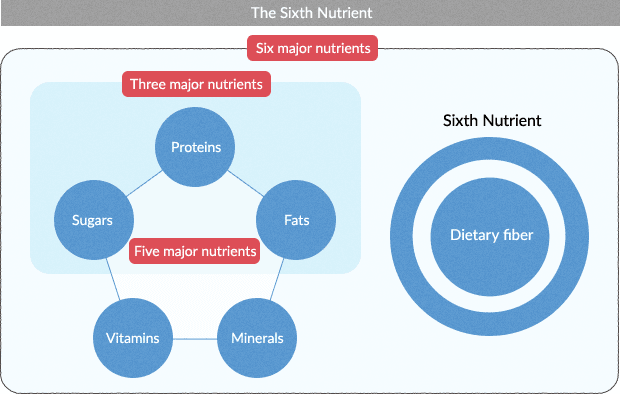The history and definition of dietary fiber
The ancient Greeks knew that dietary fiber was good for preventing constipation. Later, interest in dietary fiber increased as experts and physicians conducted further research.
The history of dietary fiber
The history of dietary fiber goes all the way back to ancient Greece. However, although it has been known since then that wheat bran*1 is good for preventing constipation, dietary fiber was thought to be food waste that was not absorbed by the intestines, and was even thought to cause the excretion of essential nutrients. Moreover, since the texture of food suffers when it contains a lot of fiber, historically a lot of effort was put into creating white bread with less fiber. In the 1930s, J.H. Kellogg*2 became interested in wheat bran and confirmed its effects on patients with constipation and colitis. British physician Eban Hipsley was the first person to use the term "dietary fiber."
- *1Wheat bran: The outer layer of wheat grain. This is rich in nutrients such as dietary fiber, iron, calcium, magnesium, zinc, and copper.
- *2J.H. Kellogg was a U.S. medical doctor, known for the development of corn flakes while working as the director of a sanatorium in Battle Creek, Michigan.
- 1930
-
- U.S.: Grain manufacturer J.H. Kellogg
Interested in wheat bran, Kellogg confirms its effects on constipation and colitis patients. - U.K.: Dr. Robert McCarrison
Reports that the Hunza people, who eat lots of whole wheat bread, beans, and fruits, lead healthy, long lives. - U.K: Dr. Alexander R. Walker
Conducts an epidemiological study on African natives and Caucasians. Finds lower incidence of heart disease and arteriosclerosis with low-fat, high-fiber diets.
- U.S.: Grain manufacturer J.H. Kellogg
- 1953
-
- U.K.: Dr. Eban Hipsley
First to introduce the term "dietary fiber."
- U.K.: Dr. Eban Hipsley
- 1971
-
- U.K.: Dr. D.P. Burkitt publishes his dietary fiber hypothesis:
"The risk of colon cancer increases with a low intake of dietary fiber."
- U.K.: Dr. D.P. Burkitt publishes his dietary fiber hypothesis:
Rapidly increasing interest in dietary fiber
Since then, dietary fiber has been seen as an essential nutrient and positioned as the sixth nutrient.

Definition of dietary fiber
There is currently no single consensus definition of dietary fiber among researchers. British physicians Drs. Burkitt and Trowell, who conducted medical activities in Africa from the 1940s onwards, published the opinion that the reason why native Africans had low rates of diseases such as diverticulosis, diabetes, gallstones, arteriosclerosis, and ischemic heart disease, which were frequently seen in developed countries, may be the result of a high intake of fiber.
At first, Dr. Trowell defined dietary fiber as "walls of the plant cells that are resistant to digestion by human enzymes."
However, as research advanced, it became clear that there were other substances with the same physiological action. At present, a universal definition is being debated. In Japan, the generally accepted concept is "the whole components of foods that resist digestion by human digestive enzymes (including those of animal origin as well as plant origin)."
According to this definition, dietary fiber includes the cellulose, lignin and pectin found in plants as well as the chitin, chitosan, starch and other components found in crustaceans such as crabs and shrimps. Some parts of the starch are non-digestible.
Dietary fiber is known to have various effects on the body, and research is ongoing.






